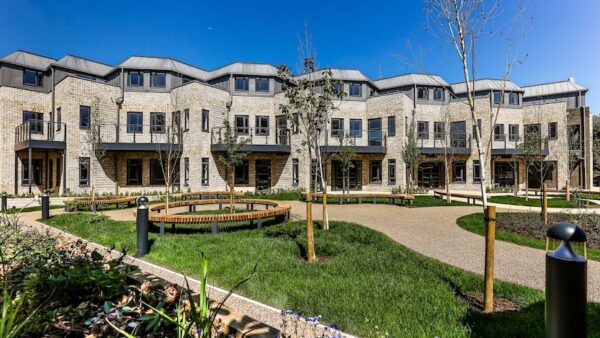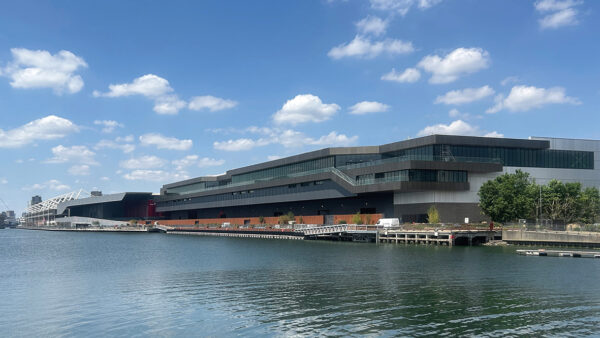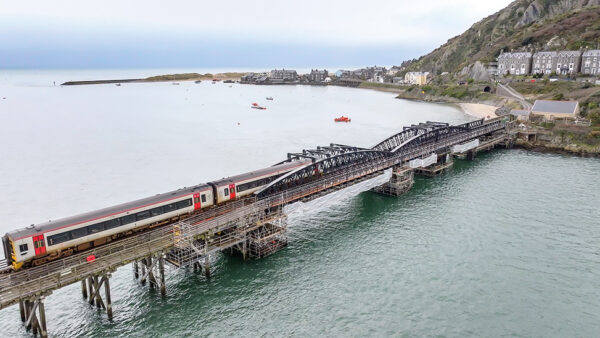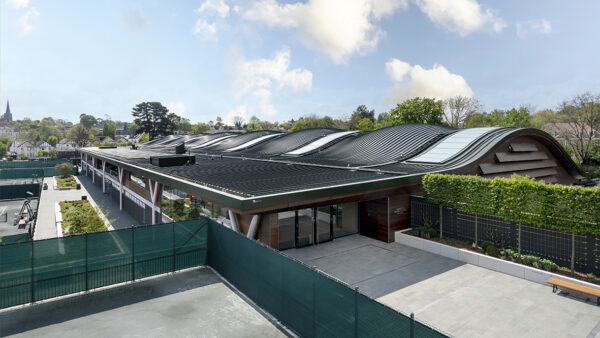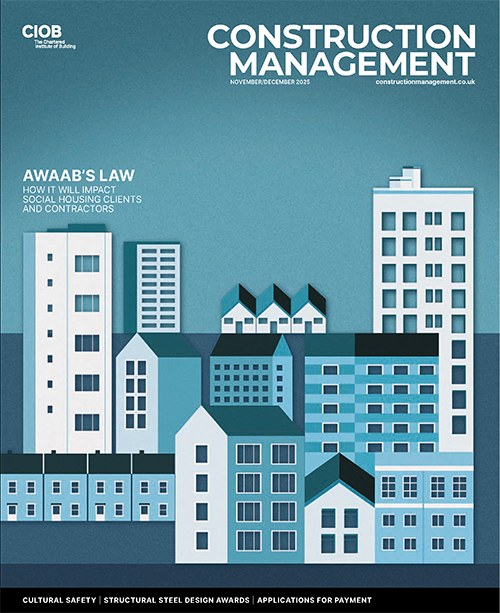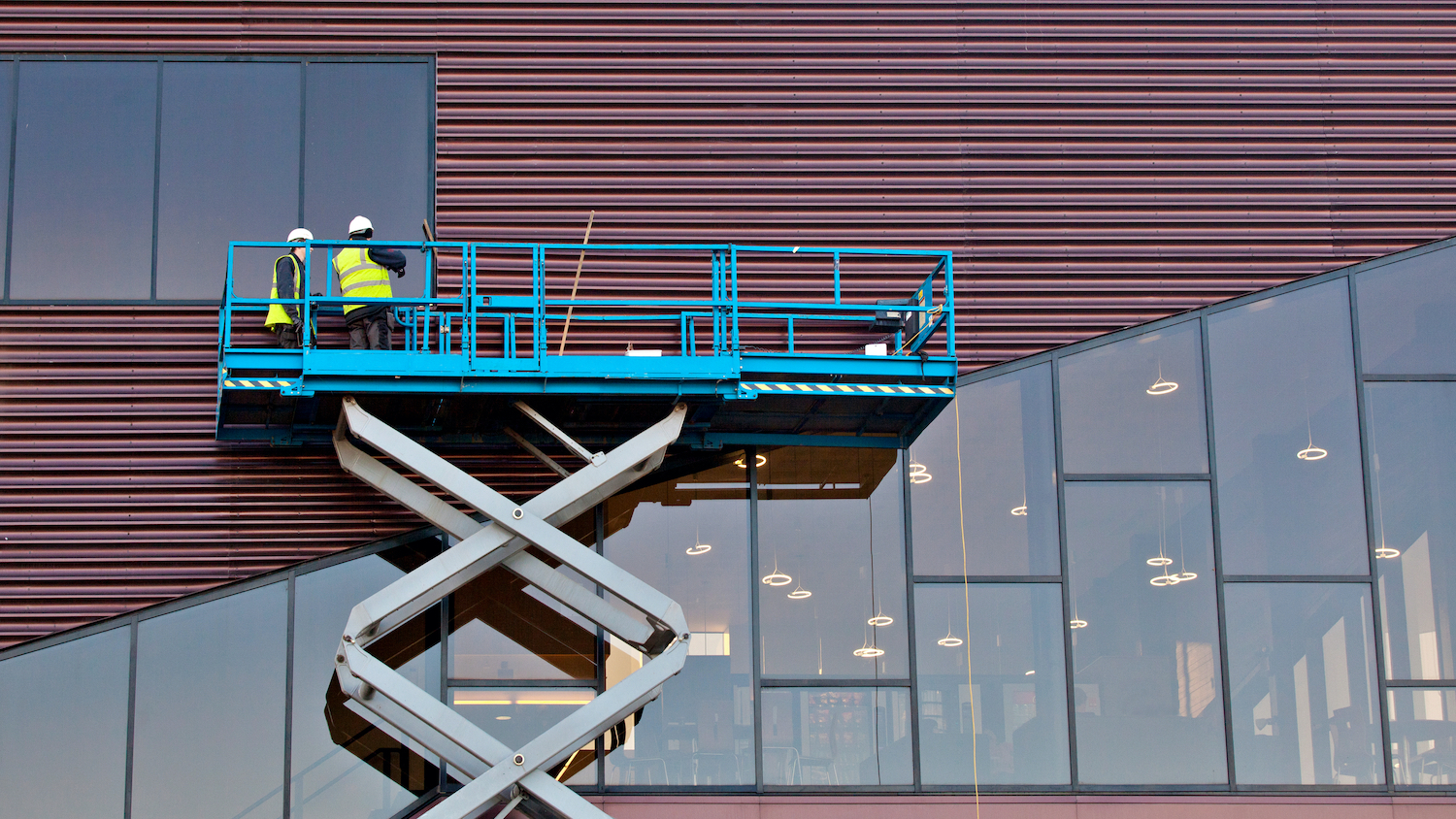Emerging from the post-Covid outdoor learning landscape, weathering steel has created a sculptural pavilion canopy to span a teaching and performance space at an Irish grammar school.
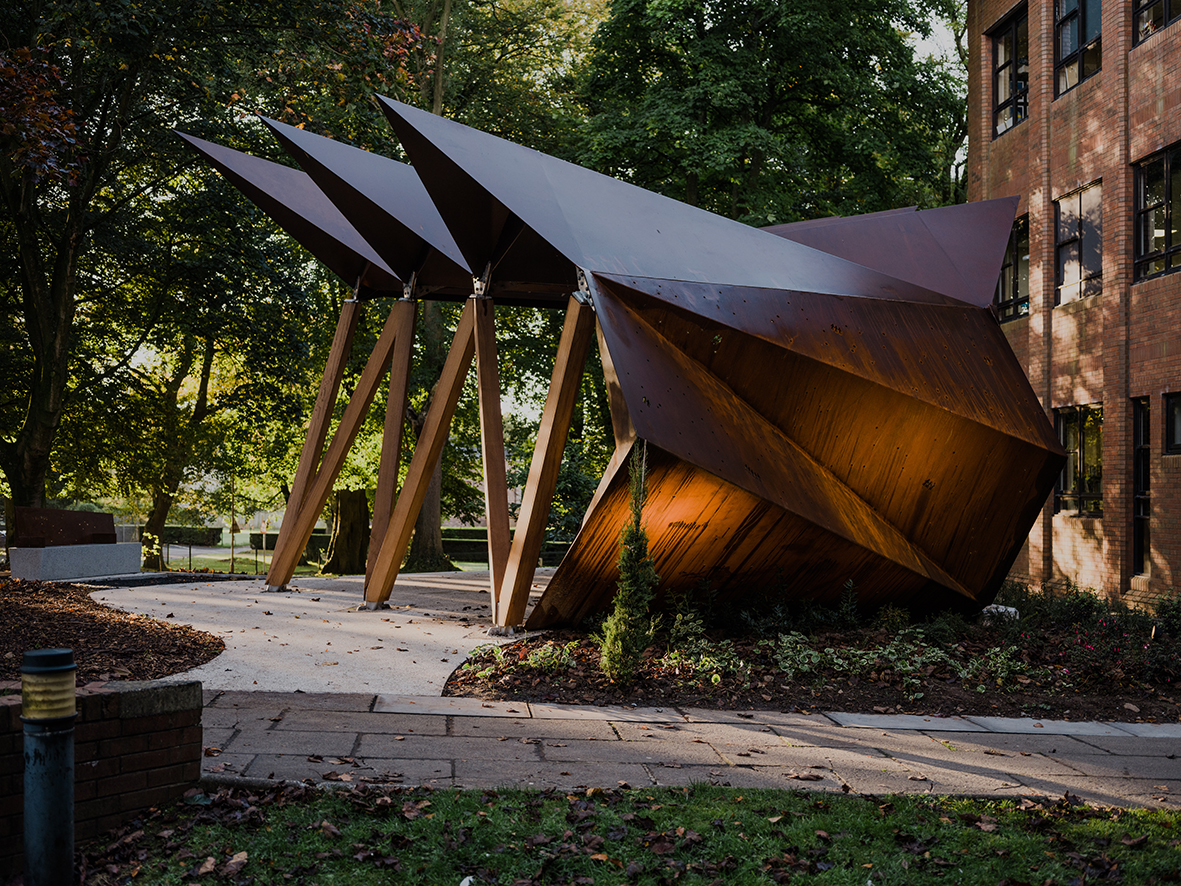
Commissioned as a legacy project to mark Friends’ School Lisburn’s 250th anniversary (in 2024), steelwork has been used to create an outdoor educational and performance space, which is both functional and an artwork in its own right.
Supported by a series of iroko hardwood-clad steel posts, the pavilion’s undulating design draws its inspiration from the school’s heritage by deconstructing the eight-pointed Quaker star to form the distinctive roof profile.
The use of weathering steel for the canopy provides a weatherproof, zero-maintenance finish with the material’s characteristic rusty appearance, creating an aesthetic structure that sits comfortably with the surrounding red-brick school buildings.
Award: Friends’ School Lisburn, Northern Ireland
- Architect: Studio idir Architects
- Structural engineer: Eamson
- Main contractor: Fabrite
- Client: Friends’ School Lisburn
During the early stages of the project’s design, the team collaborated with the school and its pupils, conducting workshops with music and arts students to understand their preferences.
During the fabrication stage, a competition for technology students was held at main contractor Fabrite’s factory. Pupils were invited to design a perforation for the canopy backdrop, with the winning design, featuring five children holding hands, used in the finished structure.
“Working with the design team was a real pleasure, as they were focused on the needs of the school from the start, and I was impressed with how they engaged with us throughout the different stages of the project,” says Friends’ School Lisburn principal Stephen Moore.
“Pupils of all ages and abilities have been interacting and enjoying the structure.”

From a structural engineering point of view, the project presented unique challenges due to its scale and complex shape.
The non-linear geometry required careful consideration of load paths and the distribution of forces across the structure. To address these challenges, the team constructed a precise 3D model of the canopy and utilised finite element analysis, which is a computerised product used to predict loads, forces and other physical effects on a structure.
“Imaginatively conceived, with full involvement of the school and its leadership, and thoughtfully delivered, this deceptively simple canopy exemplifies the remarkable potential of weathering steel no matter the scale. The clearly legible folded plate structure creates an elegant form that maximises the pedagogical value of the project and provides a new focal point on the campus.”
The model helped the design team ensure structural integrity, while minimising material usage to achieve an optimised, lightweight and aesthetically pleasing form.
“It was challenging to hold on to the purity of the original design,” says Studio idir Architects’ Aisling Rusk.
“In practical terms, it was very hard to present the structure in the usual two-dimensional plans and elevations, because it just wasn’t envisaged in that way. It took a lot of meetings and model sharing to agree where the structure would sit and how the rainwater would run off the roof without compromising the clean lines.”
Weathering steel’s unique properties made it challenging to fabricate and assemble. Close cooperation between the designers and the steel fabricator ensured the structural elements were transportable and easily assembled on site.
To help with the erection process, the connections between the steel crown and the raking columns were designed to provide temporary stability, while the structure was being installed.
The performance space is positioned so as not to disturb the site’s mature trees, which now surround it, offering additional shelter.

Produced by BCSA and Steel for Life in association with Construction Management.




